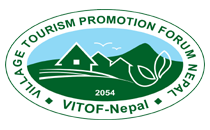Kathmandu Valley
Kathmandu Valley is the capital and largest city of Nepal. It is the most populated and developed place where the central government offices & headquarters and only international airport is located with at least 125 important Hindu and Buddhist monuments and pilgrimage sites in the arena of the valley. The Valley comprises of the original inhabitant – the Newars – and people of different socio-economic background and of different caste & groups from around the country.
Fusion of the different culture & practice comes with many beautiful festivals and events which can be witnessed every now and then in events and programs in various places around the Kathmandu valley.
There are several varieties of temple and monasteries of different style are next to each other for centuries with their own myths of origin and values. There are festivals of several ethnic groups are occurring most of the time and celebrated by gathering of people performing rites & rituals and dedicated to at least one or more deities. The cultural practice, festivals and values are passing from generation to generation over time and it has properly blended with all Nepalese people with the sense of celebration & fun in any occasion.
Kathmandu Valley is the hub for independent travelers for any budget plan. Many travelers happen to enjaoy the stay at Kathmandu Valley enjoying the vibe of several activities happening every now and then. Not only being an abode for hundreds of artistic temples, exquisite monasteries and finest carving work on stones, metals, woods but also being able to access swiftly to local countryside from the city into the narrows roads followed by rice fields and local houses. Kathmandu is often ranked for top travel destinations in the world.
Quick Facts
- Kathmandu Valley is bowl-shaped and covers approx 570 sq.km (220 sq.miles).
- Kathmandu stands on the elevation of 1,400m (4593 ft) above sea level.
- Evidence shows the earliest inhabitation of Kathmandu Valley as early as 300 BCE.
- Kathmandu Valley is made up three different districts i.e. Kathmandu, Lalitpur and Bhaktapur which were independent kingdom until 1825 B.S. (1768 A.D)
- Kathmandu Valley has the only international airport (Tribhuwan International Airport) of Nepal.
- Kathmandu Valley was listed in UNESCO World Heritage Site in 1979.
- Average Summer Temperature varies from 28-30 °C (82–86 °F) and average winter temperature is 10.1 °C (50.2 °F) and expected to drop to 3 °C (37 °F). The coldest temperature was recorded at −9.2 °C (15.4 °F) on January 10, 2013.
Kathmandu Valley Togopraphy
Kathmandu valley is surrounded by four mountain ranges and excellent for one-day trips to overview the valley or mountains,
- To East: Shivapuri (2800m/9200ft)
- To South: Phulchowki (2795m/9170ft)
- To North: Nagarjun (2170m/7119 ft)
- To West: Chandragiri (2551m/8369ft)
Few Places of Interest (for a day or two)
- Swayambunath Stupa aka Monkey Temple (One of the most sacred Buddhist site)
- Boudhanath Stupa (Largest Stupa in the world)
- Pashupatinath Temple (Most Sacred Hindu Temple of Lord Shiva, special during Shivaratri Festival)
- Changunarayan Temple (Traditional Newari settlement and a Hindu temple (with one of the earliest inscriptions dated 4th century)
- Durbar Squares at Kathmandu, Patan and Bhaktapur (Once Royal Palaces Zone with unique art and architecture crafted on stones, woods, metals on 17th-century old temples and monuments)
- Budanilkantha Temple (Hindu Temple dedicated to Sleeping Lord Vishnu)
- Narayanhiti Palace Museum (Former Royal Palace but now Royal Museum)
- Thamel Junction (Tourist hub and always happening area)
- Freak Street (Early 60’s and 70’s famous Hippe street until marijuana was banned in 1973, many travelers back then got enlighten in Nepal)
- Garden of Dreams / Kaiser Mahal (Relax in this beautiful and peaceful garden)
Story and Tales about Kathmandu
According to Buddhist scriptures, Kathmandu Valley was once a snake-infested lake and there was a perfect radiant lotus flower on the surface of the lake, proclaimed to be in the place where present day Swayambunath Stupa lies (“self-created”) and Manjushree (the bodhisattva from Tibet) decided to chop the hill at Chobhar with a sword called “Chandrahrasha” to drain the lake and then establish a habitable land. So, later the settlement became a hub for diverse individuals, merchants, devotees, pilgrims, explorer, artisans, hippies in different eras and – now – a real destination for all travelers to start their journey unleash natural and cultural treasures of Nepal.






